The Intel Broadwell Xeon E3 v4 Review: 95W, 65W and 35W with eDRAM
by Ian Cutress on August 26, 2015 9:00 AM ESTSPECviewperf 12 on a GTX 980
From popular demand, we have introduced SPECviewperf 12 into our testing regimen from August 2015. SPEC is the well-known purveyor of industry standard benchmarks, often probing both fundamental architectural behavior of processors and controllers, as well as comparing performance with well understood industry software and automated tools. It is this last point we pick up – SPECviewperf 12 tests the responsiveness of graphics packages in the fields of design, medical, automotive as well as energy. The benchmarks focus purely on responsiveness and the ability to both display and rotate complex models to aid in design or interpretation, using each packages internal graphics schema (at 1080p). We run this set with a discrete graphics card, similar to the workstation environments in which they would be used. As a new benchmark, we are still filling the system with data.
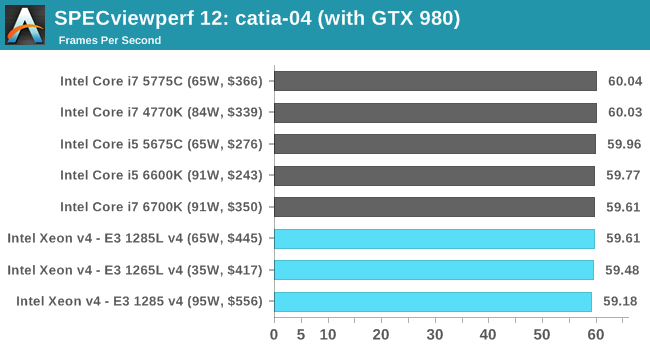
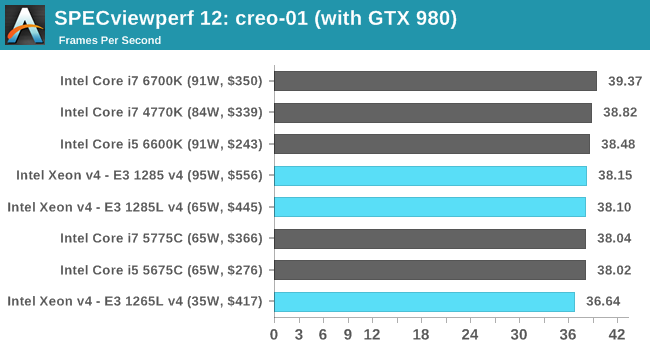
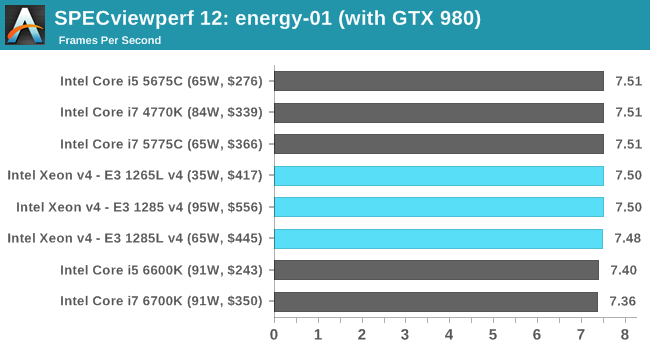
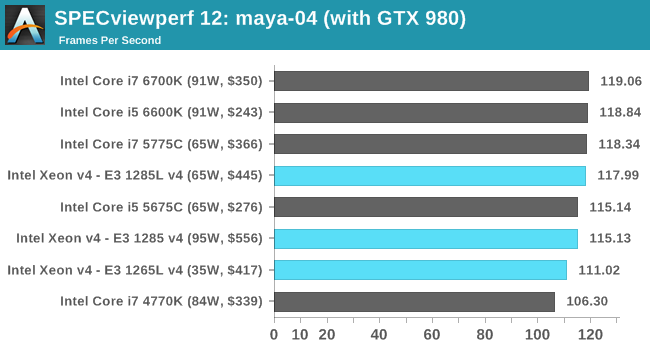
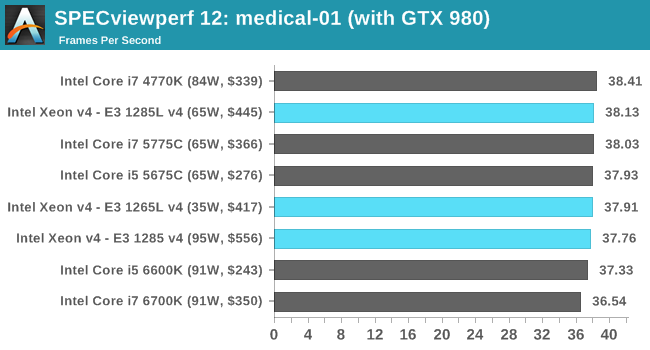
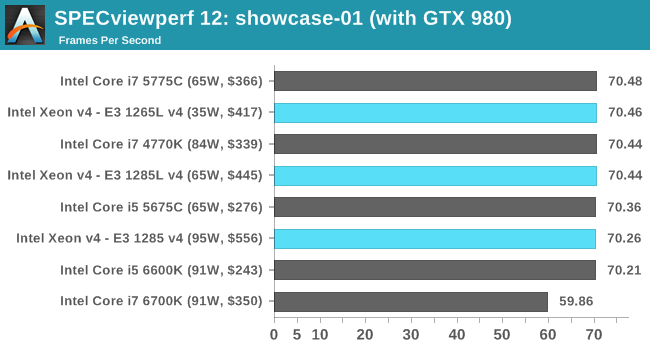

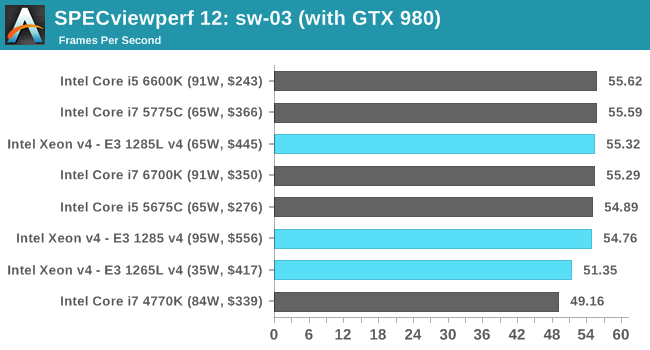
At a certain point it seems that most tests are graphics card bound, however a few show up that having the fastest processor makes a difference. Differences from the Haswell platforms score +5% at best, although a bigger difference can be seen going further back in CPU generations. At this point with a discrete graphics card, SPECviewperf's tests are more akin to our gaming tests when it comes to responsiveness.










72 Comments
View All Comments
Urizane - Wednesday, August 26, 2015 - link
The R7 240 used on that page isn't exactly fast. Actually, the A10 APU has more graphics hardware than that card, which shows in the results. The fact that Crystal Well parts can beat an A10 APU means that they also beat the R7 240.As far as the 4770R comparison goes, it seems I'm coming up with nothing useful from a quick search. Anandtech has numbers for the 4770R and numbers for the 5675C, but in none of the same benchmarks. Iris Pro 5200 (4770R) had 40 EUs that could turbo to 1.3 GHz and Iris Pro P6300 (E3-1285* v4) has 48 EUs that can turbo to 1.15 GHz (same for 5775C and 1.1 GHz for 5675C). I would think it would be a wash (some wins, some losses) between the two generations, but you're right. There would be some utility in having some hard numbers to compare the two.
alefsin - Wednesday, August 26, 2015 - link
I wish you also included e5-1630 v3 in your tests. It is slightly more expensive ($600 range I guess) but with 6 cores at 3.5 MHz is probably more attractive than the any of faster e3 series.tyger11 - Wednesday, August 26, 2015 - link
Yeah, that's the one I'm thinking about building my video workstation around, unless a 6 core skylake comes out soon.Mastadon - Thursday, August 27, 2015 - link
Skylake Xeons aren't due until 2017.JesseKramer - Wednesday, August 26, 2015 - link
According to Ark the e5-1630 v3 is a 4c8t part.http://ark.intel.com/products/82764/Intel-Xeon-Pro...
alefsin - Thursday, August 27, 2015 - link
Oh, sorry, my bad. I meant E5-1650 V3. I recently built a workstation with that for CFD analysis. 140 W is bit high these days but then again, there is no argument about the performance.Gigaplex - Wednesday, August 26, 2015 - link
"but the main parallel we should be making is the 95W of the E3-1285 v4 and the E3-1276 v3 at 84W. The E3 has some extra frequency (peaks at 4 GHz) and extra L3 cache, but the Xeon has eDRAM."The E3 vs the Xeon? They're both E3 Xeons.
MrSpadge - Wednesday, August 26, 2015 - link
"If I were thinking from the point of view of the motherboard manufacturer, they are more likely to overvolt a Xeon processor to ensure that stability rather than deal with any unstable platforms"Ian, this would be a really really poor move & explanation. You are literally paying Intel for the guaranteed stability of the Xeon. the CPU tells the mainboard exactly which voltage it wants. If a mainboard maker gives it more than this on purpose, he's sabotaging either the TDP and power efficiency, or the performance. Neither is good and could easily lead to lawsuits in the US (because the product wouldn't perform as promised).
In any way, you should be able to check this! You can test on different boards, with different software. You can read out & report the voltages of the CPUs under different load conditions. You can log & report the average CPU clocks during those tests. One would think such information is interesting when we're seemingly confronted with 2 of 3 CPUs consuming far more than promised by Intel and performing really good for that TDP.
Morawka - Wednesday, August 26, 2015 - link
i wish you guys would start putting the i7 4790K in these Skylake/Broadwell Comparisons because the clock speed is identical to the 6770K.Comparing the 6770K to the 4770K is not fair because clock speeds are different.
Oxford Guy - Wednesday, August 26, 2015 - link
Anandtech refuses to include the AMD FX 8 core in its results charts and instead only includes weaker APUs.